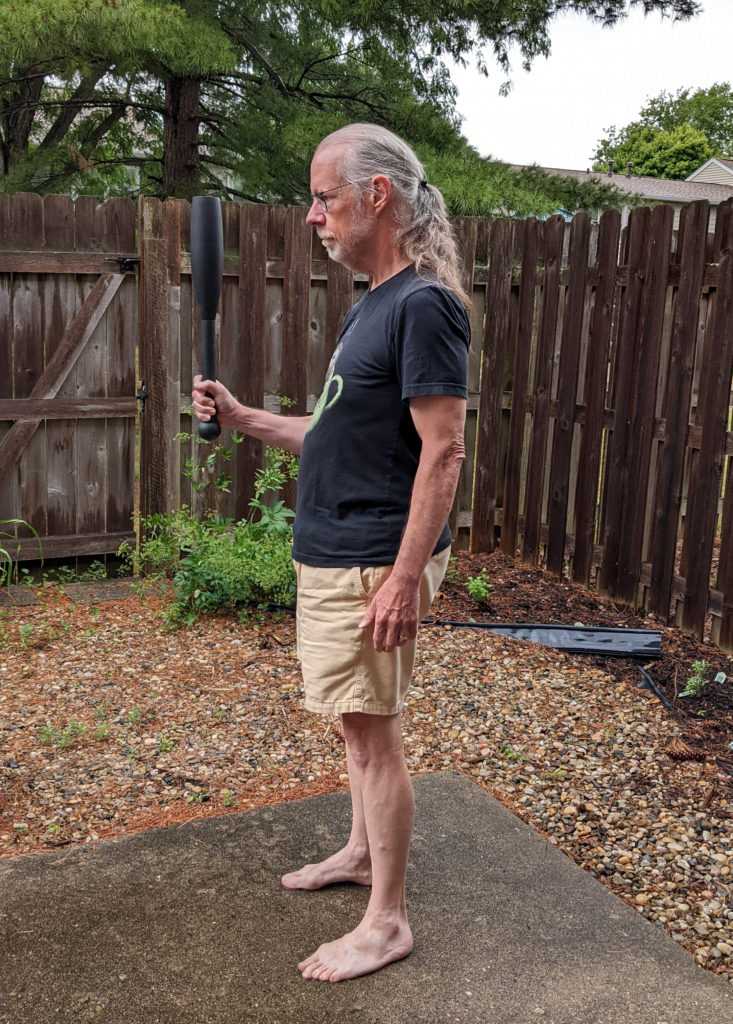Is it okay for someone who looks like me to seek or follow any sort of indigenous practice? Probably not? When a descendant of colonizers makes use of any indigenous practice it’s very likely to be an act of cultural appropriation. It doesn’t have to be, but to a first approximation, it probably is.
Even so, I find much that I like in various indigenous movement practices, which makes me want to find a way through this ethical thicket. And, I have come up with a couple of ideas.
First of all, my people have our own practices. Genetically I’m descended from people of Northwestern Europe—Scots, Irish, English, and Dutch that I know of. Just going by appearance, I conjecture that Celtic genes dominate.
There’s been an effort to recreate Celtic spiritual practices. I don’t know of any similar effort related to movement practices, but that’s probably just my ignorance. A single on-line search brought me to this page on Celtic martial arts which has a bunch of links to ancient sources, and to sources that are merely old, such as the fencing manuals I’ve become familiar with due to my interest in historical European martial arts. Finding that much so easily makes me imagine there’s probably more out there.
Culturally I’m descended from the broad line of Western culture going back to the ancient Greeks and Romans, who had very strong movement practices. Interestingly, our movement culture was largely crushed by Christianity just like cultures all over the planet. (The Catholic church believed that any effort to improve the body inevitably distracted from what they viewed as the much more important effort to improve the soul. There’s a nice discussion of this in Daniel Kunitz’s book Lift, which I wrote about here.)
There is a vast body of work on ancient Greek movement culture—ancient sources, translations, compilations, analysis, etc. In his book Natural Born Heroes, Christopher McDougall discusses various aspects at some length. I wrote about that book here.
What started me down this path was discovering Well For Culture, which bills itself as an “Indigenous Wellness Initiative.” Poking around their website I found all sorts of messages that resonate with me. And yet, as I described at the top, I hesitate to simply appropriate their cultural knowledge for my own use.
Which brings me to my second idea, which is that perhaps it’s okay to examine those portions of their cultural knowledge that they choose to make public, and use that knowledge as a lens though which to examine my own cultural traditions. Where there is overlap, I can consider emphasizing those aspects in my own movement practice. Where there is divergence, I can consider whether the differences spring from different histories, different environments, different purposes, or some other source, and let that consideration inform my own practice.
I continue to struggle just a bit with this. Are these indigenous practices being made public with the goal of helping everyone? Or are they being made public—in English, on the internet—because in the modern world other ways of reaching their own people are so limited?
In some cases I’m pretty confident that my use of indigenous knowledge is intended and supported. For example, the tai chi that I have learned and practice used to be held very closely within individual Chinese families, but has for some time been taught much more widely, with the evident goal of sharing those practices with everyone.
As another example, I’ve started exercising with steel clubs, in the tradition of Hindu (and Persian) club-swinging training. Doing this for exercise is a clear case of cultural appropriation: the British colonizers of India brought the practice back to England in the 19th century. Perhaps—hopefully—the cultural appropriation aspect is somewhat mitigated by the fact that clubs (as weapons) were used by every human culture, going back 10,000 years that we know of.

I’ve looked quickly to see if there’s any evidence for the use of clubs as a training tool, aside from its use as a weapon, and found that E. Ferdinand Lemaike in 1889, in his book Indian Clubs and How to Use Them, had this to say:
The Greeks and the Romans made great use of them, and gave them a prominent place among their various gymnastic exercises….
Not definitive—he cites no source for his statement—but it at least suggests that people in England thought they were following indigenous practices of their own culture.
He goes on to say:
That the club is the most ancient weapon nobody can deny; it is also the most natural and handy that could be found, and consequently the first used by man, for we find that Cain slew Abel with a club. The ordinary weapon of the athletic god Hercules was a club; and though he also used the bow and arrow, he is always represented with his club.
Although in this post I’m focusing on movement practice in particular, I should mention that Well For Culture emphasizes a more broad-based set of practices intended to produce wellness, including diet, song, ceremony, and much more. That fact makes me all the more inclined to look to my own cultural traditions for analogous practices and teachings.
